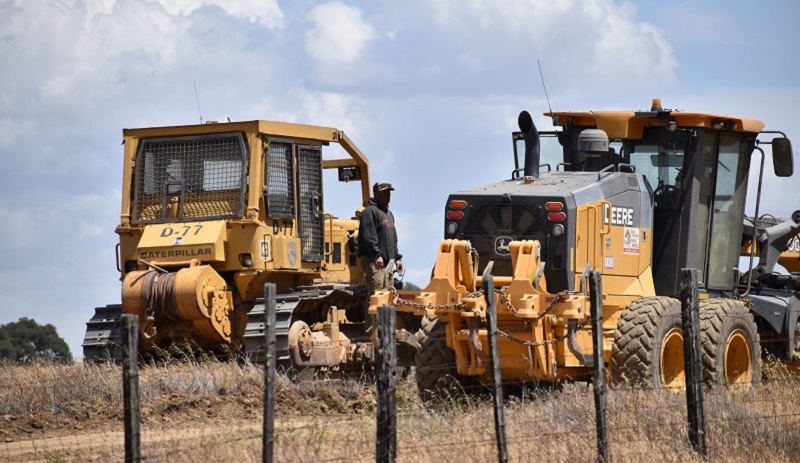With Wildfires Burning (Again), CDFW Looks To Upgrade Protection Efforts
The following is courtesy of the California Department of Fish and Wildlife:

The California Department of Fish and Wildlife (CDFW) has undertaken the largest wildfire protection and resiliency effort in its history, working to safeguard nearly all of its wildlife areas, ecological reserves and the surrounding communities from wildfire ahead of peak wildfire season this summer and fall. (CDFW)
Wildfire resiliency work is underway at dozens of CDFW-owned properties statewide. These efforts include creating fire breaks, removing brush and other wildfire fuel, thinning overgrown vegetation, expanding livestock grazing and conducting controlled burns when conditions safely permit.
The unprecedented undertaking is the result of SB 85, the “Wildfire Forest and Resilience Early Action Package,” state legislation signed by Gov. Gavin Newsom in April that authorized $536 million in wildfire protection and resiliency spending in the current fiscal year. CDFW is budgeted to receive $15 million of those funds to better protect its lands, which total about 1 million acres. Additional wildfire funding is expected in the 2021-22 state budget.
“This is a huge moment for the department, and we’re really striving for smart projects that will benefit wildlife habitats and the communities surrounding department lands,” said Stafford Lehr, CDFW Deputy Director for Wildlife and Fisheries. “We’ve already identified more than 40 projects, many of which have been started and a few already completed. We’ll be able to hire some new people and buy some new equipment that will not only help protect our own properties but better protect our neighbors as well. In many instances, this wildfire work has the added benefit of improving native plant and wildlife habitat on our properties.”
Among the CDFW wildfire resiliency projects planned or currently underway:
- At the Butte Valley Wildlife Area in Siskiyou County, a 30-acre controlled burn was recently completed with another 50 acres of burning planned for upland habitat once temperatures cool.
- At the Pine Hill Ecological Reserve in El Dorado County, CAL FIRE crews have begun thinning dense stands of manzanita, creating pathways for botanical surveys and preparing a 100-foot fire break along bordering roadways. Controlled burns are planned for the fall and winter when conditions safely permit. The work is expected to benefit several rare and listed plant species found in the ecological reserve.
- At the Cosumnes River Preserve in Sacramento County, CDFW is preparing its properties and working with other landowners such as The Nature Conservancy to accommodate more livestock grazing. CDFW is installing new, wildlife-friendly fencing on its pastureland to accommodate cattle. Cattle will help reduce grassland fire threat and make the pastures more appealing for migrating sandhill cranes and white-fronted geese. Other parcels in more-forested and dense areas of the 55,000-acre preserve are being prepared for the arrival of sheep and goats.
- At the Santa Rosa Plain Vernal Pool Ecological Reserve in Sonoma County, CDFW is mowing firebreaks around the ecological reserve border to prevent wildfire spread into adjacent neighborhoods. Sonoma County has experienced devastating wildfires in recent years.
- At the Cottonwood Creek Wildlife Area and the San Luis Reservoir Wildlife Area in Merced County, CDFW created a fire break along both sides of Highway 152, which traverses both wildlife areas. In addition to the wildlife areas, the fire break will help protect 6,000 acres of neighboring agricultural land and residential property along with Pacheco State Park.
- The Slinkard/Little Antelope Wildlife Area in Mono County suffered extensive wildfire damage in 2020. Approximately, 3,800 acres of the 11,700-acre wildlife area burned, including one building. CDFW will remove the burned-out structure and initiate habitat restoration that will benefit migrating deer among other species.
- Mowing has begun at the 6,100-acre Hollenbeck Canyon Wildlife Area in San Diego County to thin excess vegetation and lessen the wildfire threat along the bordering Highway 94. The area has a history of wildfires and mowing will help fire crews better access the property in the event of a future wildfire.



